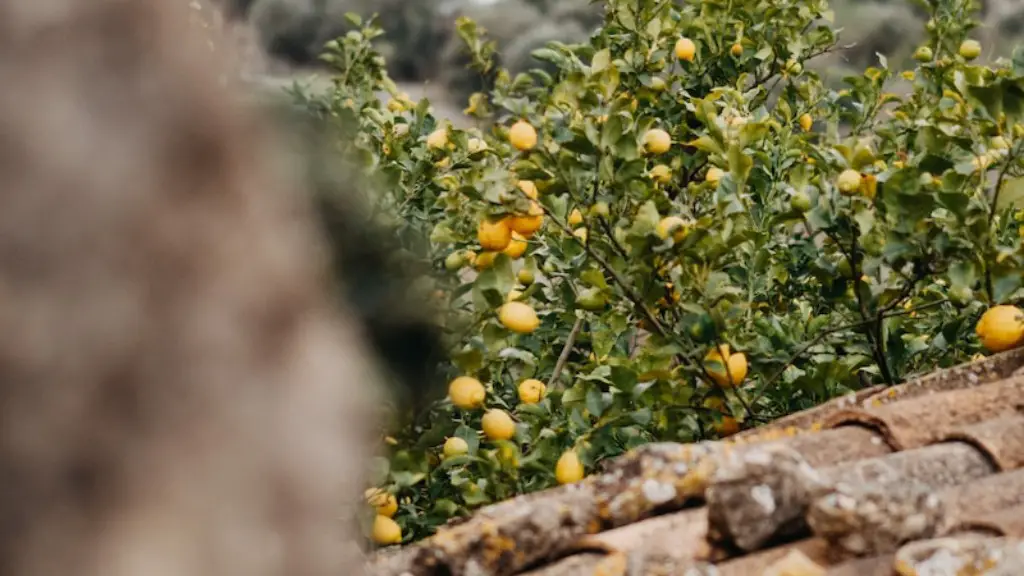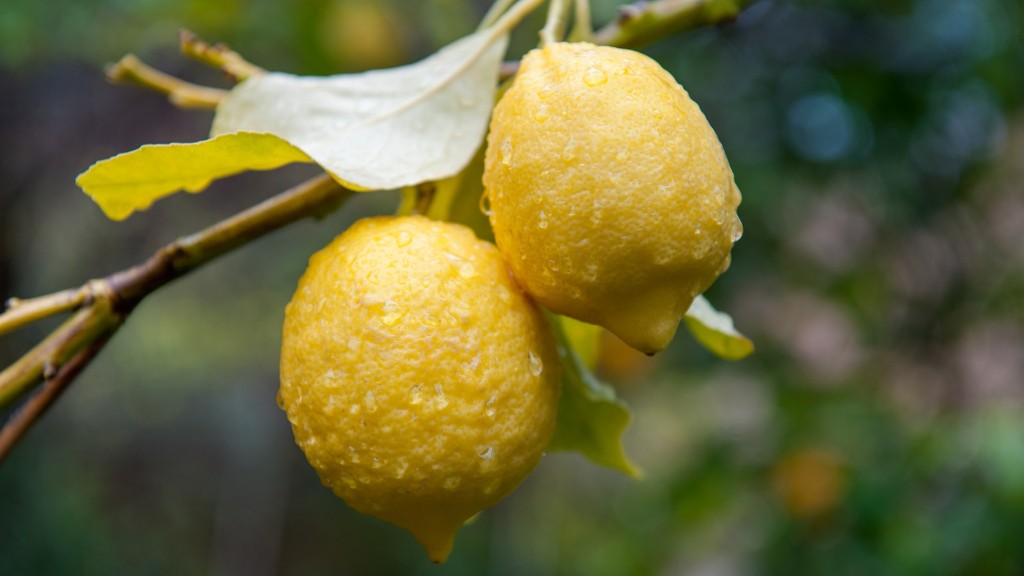Lemon trees are a key cash crop in many countries, and the declining availability of trees and the yellowing of their leaves is causing considerable concern among citrus farmers and orchard owners.
Yellowing leaves, partiularly in lemon trees, can indicate a variety of factors. Nutrient deficiencies, pests and disease, stress, or just plain old age are all potential causes of yellowing.
In terms of why this is happening to lemon trees specifically, there are a few potential causes to consider. One potential cause is the presence of citrus leaf miner, a tiny insect that is destructive to citrus trees and feeds on the leaves.
Another potential cause is that the tree is under stress. Lemon trees can be impacted by too much water, too much sun, poor soil conditions, and nutrient deficiencies. If the tree is under undue stress, it will also start to yellow as a result.
Finally, it might just be that the tree itself is aging. Lemon trees have reliable life cycles, and when their productive lives come to an end, yellowing of the leaves is a common sign.
Soil-Specific Nutrient Deficiencies
Soil specific nutrient deficiencies can cause yellowing of leaves on a lemon tree. If a tree is in need of additional nitrogen, phosphorus, or potassium, yellowing of the leaves will typically indicate this. It’s important to get a soil test done and understand what nutrients are needed in order to address any potential nutrient deficiency.
It’s also important to remember that a lack of magnesium in the soil can lead to yellowing of leaves. Magnesium is a key nutrient needed by lemon trees and is often lacking in soils. It’s important to use a magnesium-rich fertilizer to help the tree as needed.
Lime sulfur applications can be used to help prevent zinc deficiencies, which can also lead to yellowing of leaves. Zinc deficiencies are common in lemon trees, so treating them with a bit of lime sulfur is a key step in providing the necessary nutrient.
Finally, iron deficiency is another possible cause of yellowing. Iron helps to photosynthesize correctly, and if it’s lacking in the tree, yellowing of the leaves will result. Iron chelates can help address iron deficiencies by adding it to the soil.
Effects of Stress
Under-watering or over-watering can both cause significant stress to a lemon tree. Both forms of stress can lead to yellowing of the leaves and need to be addressed in order to help the tree recover. Trees should be watered deeply every week during the summer months to ensure they’re getting sufficient moisture.
Excess sun can also create stress in a lemon tree. Lemon trees often require more shade than other citrus trees, so it’s important to ensure that they’re not being exposed to too much sun. Competing vegetation and shady spots can help in this regard.
Poor soil conditions can lead to a lemon tree struggling, which can cause yellowing of the leaves. Adjusting the structure of the soil and adding organic matter can be beneficial in this regard.
Finally, pests and disease can be responsible for yellowing leaves in a lemon tree. Managing pests and diseases is important in order to prevent any potential damage to the tree.
Common Pests & Diseases
Among common pests that contribute to yellowing leaves are citrus leaf miner and citrus blight. Citrus leaf miner is a very small insect that feeds on the leaves of the tree, which can lead to yellowing. Citrus blight is a fungus that can cause yellowing of the leaves.
Citrus canker is another common disease that affects lemon trees. This disease can lead to fruit rot and yellowing of the leaves. It is important to manage this disease to prevent it from spreading.
It’s also important to watch out for scale insects, as these can also lead to yellowing of the leaves. Scale insects are tiny insects that are usually attached to the leaves of the tree, and they feed off of the sap of the tree, which can cause yellowing.
Gummosis and phytophthora are two additional diseases that can affect a lemon tree. Gummosis is a fungal infection that can cause leaves to yellow, and phytophthora is a soil-borne disease that can also lead to yellowing of the leaves.
Aging Lemon Trees
While there are numerous potential causes of yellowing leaves on a lemon tree, it’s important to remember that the tree itself may just be reaching the end of its productive life. Lemon trees have reliable life cycles, and it’s important to watch for signs that indicate a tree is nearing the end of its life.
Yellowing of the leaves is often the first sign that a tree is aging, as the tree will start to produce less fruit as it starts to age. Decreased productivity is another sign that the tree may be reaching the end of its life.
In addition, the disease and pest resistance of lemon trees typically deteriorates with age, making the tree more susceptible to damage. It is important to watch for signs of disease and pests and address them as soon as possible if they arise.
Finally, a lemon tree that is aging will often start to drop fruit prematurely. This is a sure sign that the tree is reaching the end of its life, and it’s important to start considering replanting to ensure a new supply of lemon trees.
Nutrient Imbalances
Nutrient imbalances in the soil can lead to yellowing leaves in a lemon tree. If the soil is lacking in certain key nutrients, the leaves can start to yellow as the tree struggles to sustain itself. It’s important to have the soil tested and address any nutrient imbalances in order to help the tree.
Nitrogen deficiencies can be addressed with a nitrogen-rich fertilizer, and phosphorus deficiencies can be addressed with phosphate-rich fertilizers. Potassium deficiencies are also common and can be addressed with potassium chloride, potassium sulfate, and potassium nitrate.
Magnesium deficiencies can be addressed with Epsom salts or magnesium sulfate. Zinc deficiencies can be addressed with zinc sulfate, and iron deficiencies can be addressed with iron chelates.
It’s important to remember that it is not always the case that yellowing leaves indicate a nutrient deficiency. It is important to consider all potential causes of yellowing leaves before implementing any treatment.
Conclusion
There are numerous potential causes of yellowing leaves on a lemon tree, including pests, disease, stress, nutrient deficiencies, and age. It’s important to consider all potential causes before implementing any treatment in order to ensure that the tree is properly taken care of.




